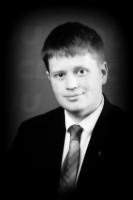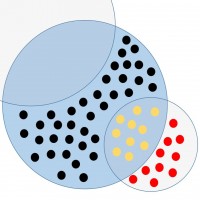In facts, the first is required by the lighting process whereas the second can be in most cases completely eliminated using fully shielded fixtures and the third reduced as much as possible maximizing the utilance (i.e. the ratio between the flux sent on the road and the total flux emitted by the luminaire).
Klein [8] sieht vor allem die Kommunen in der Pflicht:
Straßenbeleuchtungsanlagen müssen gut abgeschirmt sein. Ansonsten strahlen sie Licht nach oben und seitlich ab, wo es zu Beleuchtungszwecken nicht benötigt wird, zur Blendung führen kann und eine unnötige Energieverschwendung darstellt. Das in alle Richtungen strahlende Streulicht steht folglich nicht mehr zur Beleuchtung zur Verfügung und führt zur Lichtverschmutzung. Deshalb sollten Lampen stets nur nach unten abstrahlen.
An dieser Stelle ist jedoch vor allem ein Tätigwerden der Kommunen erforderlich. Es ist von großer Bedeutung, dass diese über die Problematik aufgeklärt sind, da die Beleuchtungspflicht im Rahmen der Verkehrssicherungspflicht den Kommunen obliegt. Allein kommunale Entscheidungsträger legen für öffentliche Flächen fest, welche Leuchtmittel an bestimmten Bereichen eingesetzt werden. Somit ist das Wissen vom Einsatz ökologischer und wirtschaftlicher Beleuchtung von essentieller Bedeutung.
Und welches Fazit ergibt sich aus all dem?
Lichtverschmutzung hat eine ganze Reihe ernsthafter ökologischer Konsequenzen und beeinflusst möglicherweise sogar die menschliche Gesundheit. Der Verlust des Nachthimmels ist nicht nur ein Verlust für die astronomische Forschung allein, sondern für die Gesellschaft an sich. Die Entwicklung muss jedoch nicht einfach hingenommen werden. Mit effizienter und technisch optimierter Beleuchtungstechnik, lässt sich die Lichtverschmutzung wieder zurückdrängen – und ganz nebenbei viel Energie sparen.
Crawford [4] fasst dies perfekt zusammen:
With good lighting, we all win. We help preserve the dark skies, we see better at night (and are safer and more secure), we have a more pleasant and comfortable nighttime environment, and we save a great deal of energy and money doing so. Neiter astronomers nor the public, anywhere, need any of the adverse environmental effects of poor lighting. We should not tolerate it. We must do all we can, individually and organizationally, to preserve the beauty of the night sky, for astronomy and for all mankind!
Kleine Bibliographie zur Lichtverschmutzung:
(ein Anspruch auf Vollständigkeit wird nicht erhoben…)
Zitierte Arbeiten zur Lichtverschmutzung
[1] Cinzano, P.: Light pollution by luminaires in roadway lighting, paper presented at the CIE TC4-21 (Interference of light on the astronomical observations), CIE Div.4 meeting, Turin, 28 September – 3 October 2002.
https://www.inquinamentoluminoso.it/roadpollution/roadpaper1_turin.pdf
[2] Cinzano, P. & Elvidge, C.: Night sky brightness at sites from DMSP-OLS satellite measurements , Monthly Notices of the Royal Astronomical Society, 353, 1107-11167, 2000.
https://arxiv.org/pdf/astro-ph/0406610
[3] Cinzano, P.; Falchi, F. & Elvidge, C.: The first world atlas of the artificial night sky brightness , Monthly Notices of the Royal Astronomical Society, 328, 689-707, 2001.
https://homepages.wmich.edu/~korista/skybright.pdf
[4] Crawford, D.: Light Pollution: The Problems, the Solutions, Preserving The Astronomical Windows. Proceedings of Joint ASP Conference, Vol 139, 1998.
https://adsabs.harvard.edu/abs/1998paw..conf…13C
[5] Hänel, A: Schutzgebiete für den Sternenhimmel, Nationalpark 4/2007, 2007.
[6] Heilig, P. & Huemer, P.: Lichtverschmutzung (Online-Veröffentlichung der österreichischen NGO “Ärzte für eine gesunde Umwelt”)
https://members.nextra.at/aegu/Ger/oekobiotikum/0602/2_LAT_Teil2.pdf
[7] Höttinger, H. & Graf, W.: Zur Anlockwirkung öffentlicher Beleuchtungseinrichtungen auf nachtaktive Insekten, Studie im Auftrag der Wiener Stadtverwaltung, 2003.
https://www.wien.gv.at/umweltschutz/pool/pdf/lichtquelle.pdf
[8] Klein, M.: Lichtverschmutzung – Eine neue Umweltproblematik, Diplomarbeit an der Fachhochschule Ludwigsburg, 2004.
https://www.home.uos.de/ahaenel/darksky/dalichtver.pdf
[9] Kobler, R.: Die Lichtverschmutzung in der Schweiz – Mögliche Auswirkungen und praktische Lösungsansätze, Diplomarbeit an der Fachhochschule beider Basel, 2002.
https://www.darksky.ch/downloads/artikel/rlkobler_dipl.pdf
[10] Longcore, T. & Rich, C.: Ecological Light Pollution, Frontiers in Ecology and the Environment 2(4):191-198, 2004.
https://www.seaturtle.org/PDF/Longcore_2004_FrontEcolEnviron.pdf
[11] Moore, M.; Pierce, S.; Walsh, H.; Kvalvik, S. & Lim, J.: Urban light pollution alters the diel vertical migration of Daphnia, Verh. Internat. Verein. Limnol. 27: 1-4, 2000.
https://www.wellesley.edu/Biology/Faculty/Mmoore/Content/Moore_2000.pdf
[12] Osterbrock, D.; Walker, M. & Koski, A.: The spectrum of light pollution at Mount Hamilton, Publications of the Astronomical Society of the Pacific, 1976.
https://adsabs.harvard.edu/abs/1976PASP…88..349O
[13] Shaflik, Carl: Environmental Effects of Roadway Lighting, IDA Information Sheet prepared at University of British Columbia, Department of Civil Engineering, 1997.
https://www.astrogranada.org/cieloscuro/documentos_cl/environmental_effects_of_roadway_lighting.doc
Weitere, nicht-zitierte Arbeiten zur Lichtverschmutzung:
[14] Albers, S. & Duriscoe, D.: Modeling Light Pollution from Population Data and Implications for National Park Service Lands, George Wright Forum, Vol 19, no. 1.
https://www.georgewright.org/184albers.pdf
[15] Aubé, M.; Franchomme-Fossé, L.; Robert-Staehler, P. & Houle, V.: Light Pollution Modeling and detection in a heterogeneous environment: Toward a Night Time Aerosol Optical Depth Retrieval, Proceedings of SPIE, Vol: 5890, 2005.
https://spie.org/documents/Newsroom/Imported/28_268_0_2005-11-16/28_268_0_2005-11-16.PDF
[16] Barducci, A.; Marcoionni, P.; Pippi, I. & Poggesi, M: Effects of Light Pollution Revealed During a Nocturnal Aerial Survey by Two Hyperspectral Imagers, Applied Optics, Vol. 42, Issue 21, pp. 4349-4361, 2003.
https://www.ifac.cnr.it/corsari/papers/Effects%20of%20light%20pollution.pdf
[17] Cinzano, P.: The Propagation of Light Pollution in Diffusely Urbanised Areas, Measuring and Modelling Light Pollution, ed. P. Cinzano, Mem. Soc. Astro. It., vol.71, 93-112, 2000.
https://arxiv.org/pdf/astro-ph/9811293
[18] Cinzano, P. & & Castro, F.: The Artificial Sky Luminance And The Emission Angles Of The Upward Light Flux, Measuring and Modelling Light Pollution, ed. P. Cinzano, Mem. Soc. Astro. It., vol.71, 251-256, 2000.
https://arxiv.org/abs/astro-ph/9811297
[19] Garstang, R.: Mount Wilson Observatory: The sad story of light pollution, The Observatory, Vol. 124, p. 14-21, 2004.
https://adsabs.harvard.edu/abs/2004Obs…124…14G
[20] Garstang, R.: Light Pollution Modeling, Astronomical Society Pacific Conference Series 17, 1991.
https://adsabs.harvard.edu/abs/1991ASPC…17…56G
[21] Hamamura, S.; Syuzo, I. & Elvidge, C.: Educating the Public about Light Pollution, IAU Symposium 196 proceedings, 2000.
https://adsabs.harvard.edu/abs/2001IAUS..196..363I
[22] Hänel, A.: The Situation of Light Pollution in Germany, 2nd European Symposium on the Protection of the Night Sky, Luzern, 2002.
https://www.home.uni-osnabrueck.de/ahaenel/darksky/memsait.pdf
[23] Hunter, T. & Crawford, L: Economics of Light Pollution, Light Pollution, Radio Interference, and Space Debris, ASP Conference Series, Vol. 17, IAU Colloquium 112, D.L. Crawford, Ed., p. 89, 1991.
https://adsabs.harvard.edu/abs/1991lpri.conf…89H
[24] Jewkes, P: Light pollution and the law: what can you do?, Journal of the British Astronomical Association 108, 5, p. 258-260, 1998.
https://adsabs.harvard.edu/abs/1998JBAA..108..258J
[25] Massey, M. & Foltz, C.: The Spectrum of the Night Sky over Mount Hopkins and Kitt Peak: Changes after a Decade, Publications of the Astronomical Society of the Pacific, 2000.
https://www-kpno.kpno.noao.edu/mtninfo/massey_foltz_2000.pdf
[26] Osman, A.; Isobe, S.; Nawar, S. & Morcos, A.: Light Pollution and Energy Loss from Cairo, Preserving the Astronomical Sky, Proceedings of IAU 196, 1999.
https://adsabs.harvard.edu/abs/2001IAUS..196..107O
[27] Pedani, M.: Light pollution at the Roque de los Muchachos Observatory, New Astronomy 9, p. 641-650, 2004.
https://arxiv.org/pdf/astro-ph/0407109
[28] Pike, R.: A simple computer model for the growth of light pollution, Journal of the Royal Astronomical Society of Canada, Vol. 70, p.116, 1976.
https://www.cs.bell-labs.com/cm/cs/who/rob/rpike.pdf
[29] Percey, J.: Light Pollution: Education of Students, Teachers and the Public, IAU Symposium no 196, Preserving the Astronomical Sky, Vienna, eds. R.J. Cohen & W.T. Sullivan III, 359, 2001.
https://adsabs.harvard.edu/abs/2001IAUS..196..353P
[30] Walker, M.: Light Pollution in California and Arizona, Publications of the Astronomical Society of the Pacific, 1973.
https://adsabs.harvard.edu/abs/1973PASP…85..508W
Bücher
[31] Longcore, T. & Rich, C.: Ecological Consequences of Artificial Night Lighting, Veröffentlicht von Island Press, 2005, ISBN 1559631295, 9781559631297, 458 Seiten.
https://books.google.de/books?id=dEEGtAtR1NcC
[32] Mizon, B.: Light Pollution: Strategies and Solutions, Veröffentlicht von Springer, 2001, ISBN 1852334975, 9781852334970, 219 Seiten.
https://books.google.de/books?id=QcM-D8Kr8l4C
[33] Narisada, K. & Schreuder, D.: Light Pollution Handbook, Veröffentlicht von Springer, 2004, ISBN 978-1402026652, 140202665X, 943 Seiten.
https://books.google.de/books?id=61B_RV3EdIcC
Software
[34] Roadpollution
https://www.lightpollution.it/roadpollution/



Kommentare (5)